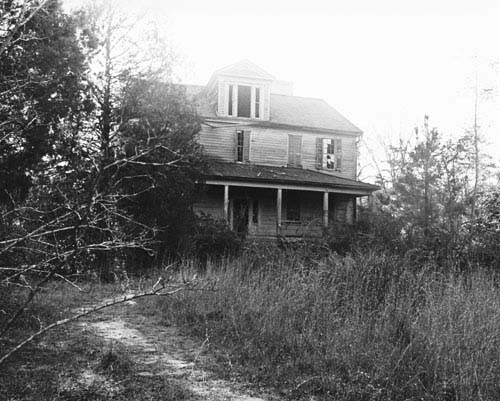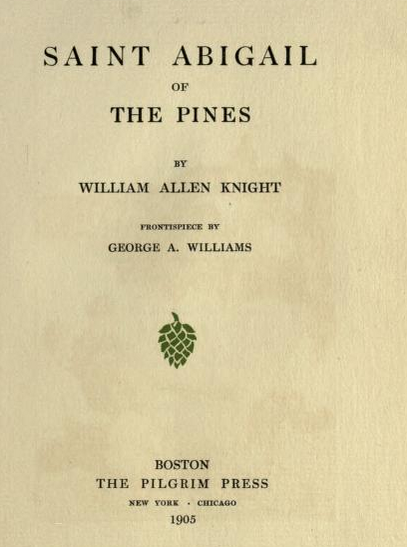'Witchcraft Mark' and other interesting Haskells of Rochester past
Today, the Haskells are not among the most well known in Rochester’s history.
Taking a look at old records, however, reveals the Haskell family tree had some branches that overlap with town history.
Although not much is known about any one Haskell, there are snippets of biographical information that point to an interesting family.
There was a man on the lam from the most heinous jury duty of his day, an aide to George Washington during the Revolutionary War and a town beauty who inspired a character in a novel.
The Haskell’s Rochester line began with Mark Haskell, originally from Salem, who settled on a tract of land that stretched from the Meeting House in Rochester Center down what is now New Bedford Road. The land encompasses present day Teal Farm and Frank’s Barbershop.
Mark's children, grandchildren, great grandchildren and beyond would make their home on this large patch of land, building at least eight houses, a few of which still stand. Members of the family also lived along Mary’s Pond and on Walnut Plain Road.
Although the family patriarch, Mark, only lived in Rochester for about seven years before he died, he was perhaps the most interesting member of the Haskell clan.
‘Witchcraft Mark' Haskell
In 1692, Mark Haskell fled his home in Salem, leaving behind his wife and six children.
Not a heartless scoundrel, Mark was opposed to the Salem witch trials and had just been called as a juror for one of the proceedings.
“To refuse to serve on the jury was to point an accusatory finger at himself,” reads a 1973 history written on the family.
Mark fled at night and is rumored to have ridden from Salem to Lakeville. His brother, John, lived in Middleborough or Rochester and is likely the reason Mark decided to settle in Rochester.
He built a house there and in five years was joined by his family.
That same year, 1697, the family’s house burned down and Mark became the first town clerk. He was also the first person to keep the town books.
Mark also worked on the committee to build the first Meeting House, an all-purpose building for church, government and community gatherings.
Unfortunately, Mark died in 1699 at the age of 49 before the building was completed. Mark is thought to be the first person buried in the cemetery at the center of town.
Despite his prominence in the town, Mark never lost the nickname “Witchcraft Mark” for his infamous escape from jury duty.
After he died, his wife, Mary, eked out a living for the family by sweeping the Meeting House every 15 days.
Vive la Revolution!
Several Haskells served in the Revolutionary War. Mark’s granson, Elnathan Jr., was notably an officer of the Continental Army and served on George Washington’s staff where he was an “aide de camp” in the war. Elnathan participated in many of the war’s significant battles.
Now, visitors to the Capitol’s rotunda see his image every day. Elnathan’s face is one of several soldiers on John Trumbull’s painting, “Surrender of General Burgoyne,” that depicts British Gen. John Burgoyne surrendering to George Washington.
Elnathan and his wife settled in South Carolina after the war, where they purchased a plantation in 1809, renaming it Zante, the Greek name for woods.
Elnathan’s brother, Nathan (apparently a favorite name for their parents,) did not fare so well in the war.
Nathan was killed on the ship “Mars” off the coast of Nantes, France in September 1780 during a fight with the British, as reported on his father’s tombstone.
The stone read “Lieut. Nathan Haskell, son of Mr. E. Haskell, fell in an engagement in latitude 47 & 18 N. on the coast of France ye 9th Sept. 1780, in the 20th Year of his age.”
According to an article by historian Edgar Stanton Maclay titled “A Sea Fight Long Forgot” and on file with the Rochester Historical Society, the reference is the only one that points to fighting in that region.
The lingering Eugenia Haskell
According to a history on the family in the Rochester Historical Society archives, Eugenia Haskell, daughter of Nathaniel Haskell and grand niece to Nathan and Elnathan, was an accomplished and intelligent young woman who attended school in Philadelphia.
A rare beauty, she was said to be the inspiration for William Allen Knight’s novel “Saint Abigail of the Pines.”
In the book she is described as follows: “She was of a great age and loved by many. She lived not far from here – northward from New Bedford a few miles. I shall never forget calling on her once. Graybearded men told me how in her youth she was a famous beauty. They said something, too, of a certain mystery hanging about her unwedded life…. I remember that her voice was softlike, but it sounded clear as a bell out under the trees.”
Like Saint Abigail, Eugenia Haskell never married, despite many suitors, but she was well-known for her hospitality.
At her home, 333 Walnut Plain Road, Eugenia hosted artists, writers and even President Grover Cleveland.
The last member of her immediate family, Eugenia died during a snowstorm in 1907, but there are rumors that her ghost lingered.
“People claim her footsteps can be heard in the house, and children playing on the lawn will catch a glimpse of her face, framed by dancing ringlets, watching from an upstairs window,” says a 1973 history on the Haskells by the Rochester Historical Society.
Plant pathology
Dr. Royal Haskell was one of the last Rochester Haskells about which much is known. According to Royal’s obituary, published in 1958 by the New York Times, his research focused on plant disease.
Royal attended Dartmouth College and went on to get a Ph.D. from Cornell University in 1917. As a professor at Cornell, he developed the “Haskell dry method” to prevent disease on seed oats and conducted research on potato diseases.
Royal went on to work for the government as a plant pathologist in Washington D.C., where he lived with his wife, Myrta, and son, Royal Jr. Royal maintained his connection to his hometown, and it is known that his son, also a doctor, returned to their Rochester home in the summers.
Located at 600 New Bedford Road and called the Addison Weld House or the Royal Haskell House, the home was originally built by Witchcraft Mark’s great great granddaughter Susan Haskell in 1854. It stayed in the family until the 1970s.
Other branches on the family tree
There were several other interesting tidbits in the Haskell family history.
The Hon. Jesse Haskell served in the War of 1812 and was a state representative.
Then there was Prince Haskell. One document said he was captured by Native Americans for a time and later had a brief career as a newspaper man in San Francisco.
Mary Haskell, daughter of Witchcraft Mark, married a sea captain and had five sons who became sea captains.
Little more is known about the Haskells, and by 1915, few remained in the area.
Yet, as members of the town and state governments, farmers and church leaders, the family helped to lay the foundation of Rochester from its early days.
And imagining the many Haskells who settled New Bedford Road may make the familiar drive a little more interesting.
Special thanks to Sue LaFleur of the Rochester Historical Society for providing papers and background information.
.jpg)














